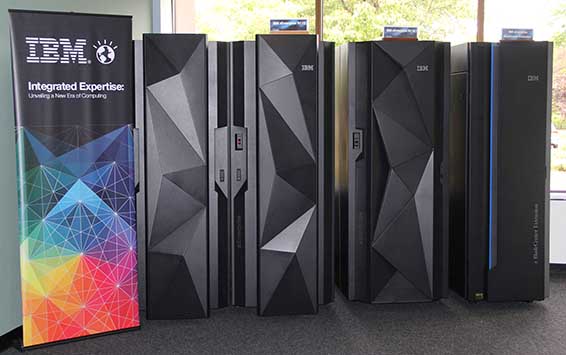
However, in the mid-1950s, all computers were mainframes, since the term 'mainframe' referred to the main CPU frame. In those days, mainframe computers were not just the largest computers; they were the only computers. Several manufacturers like IBM, Honeywell, Burroughs produced mainframe computers from the late 1950s. From the 1970s, the term Mainframe Computer was almost
synonymous with IBM products due to their market share.
In the hierarchy of computers, mainframes are right below supercomputers, the most powerful computers in the world. (Which is why they are aptly named "supercomputers.") Yet a mainframe can usually execute many programs simultaneously at a high speed, whereas supercomputers are designed to execute a single process at the highest speed. The ability of Mainframes are often measured in millions of instructions per second (MIPS), but supercomputers are measured in floating point operations per second (FLOPS). Commonly supercomputers are used for scientific problems, while mainframes are used for business processing.
Mainframe History
The Mainframe Story
One common impression of a mainframe's user interface is the 80x24-character "green screen" terminal, named for the old cathode ray tube (CRT) monitors from years ago that glowed green. In reality, mainframe interfaces today look much the same as those for personal computers. When a business application is accessed through a Web browser, there is often a mainframe computer performing crucial functions behind the scenes.
Now a days, people around the world connect to the Mainframe Computer, remotely over internet, from their work-place or home using a PC running a software that pretends to be a dumb-terminal. You don't have to sit physically near a Mainframe CPU to do your work.
Next Article: Who uses Mainframes